Mihael Mohorčič
The Energy Cost of Artificial Intelligence of Things Lifecycle
Aug 01, 2024Abstract:Artificial intelligence (AI)coupled with existing Internet of Things (IoT) enables more streamlined and autonomous operations across various economic sectors. Consequently, the paradigm of Artificial Intelligence of Things (AIoT) having AI techniques at its core implies additional energy and carbon costs that may become significant with more complex neural architectures. To better understand the energy and Carbon Footprint (CF) of some AIoT components, very recent studies employ conventional metrics. However, these metrics are not designed to capture energy efficiency aspects of inference. In this paper, we propose a new metric, the Energy Cost of AIoT Lifecycle (eCAL) to capture the overall energy cost of inference over the lifecycle of an AIoT system. We devise a new methodology for determining eCAL of an AIoT system by analyzing the complexity of data manipulation in individual components involved in the AIoT lifecycle and derive the overall and per bit energy consumption. With eCAL we show that the better a model is and the more it is used, the more energy efficient an inference is. For an example AIoT configuration, eCAL for making $100$ inferences is $1.43$ times higher than for $1000$ inferences. We also evaluate the CF of the AIoT system by calculating the equivalent CO$_{2}$ emissions based on the energy consumption and the Carbon Intensity (CI) across different countries. Using 2023 renewable data, our analysis reveals that deploying an AIoT system in Germany results in emitting $4.62$ times higher CO$_2$ than in Finland, due to latter using more low-CI energy sources.
Deep Feature Learning for Wireless Spectrum Data
Aug 07, 2023Abstract:In recent years, the traditional feature engineering process for training machine learning models is being automated by the feature extraction layers integrated in deep learning architectures. In wireless networks, many studies were conducted in automatic learning of feature representations for domain-related challenges. However, most of the existing works assume some supervision along the learning process by using labels to optimize the model. In this paper, we investigate an approach to learning feature representations for wireless transmission clustering in a completely unsupervised manner, i.e. requiring no labels in the process. We propose a model based on convolutional neural networks that automatically learns a reduced dimensionality representation of the input data with 99.3% less components compared to a baseline principal component analysis (PCA). We show that the automatic representation learning is able to extract fine-grained clusters containing the shapes of the wireless transmission bursts, while the baseline enables only general separability of the data based on the background noise.
Towards Sustainable Deep Learning for Multi-Label Classification on NILM
Jul 18, 2023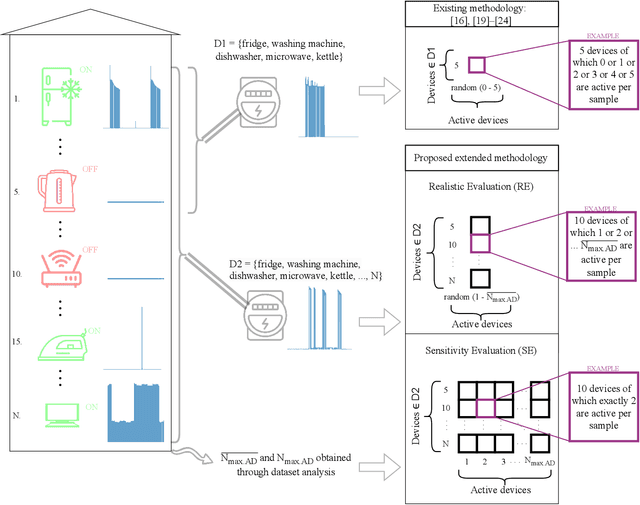

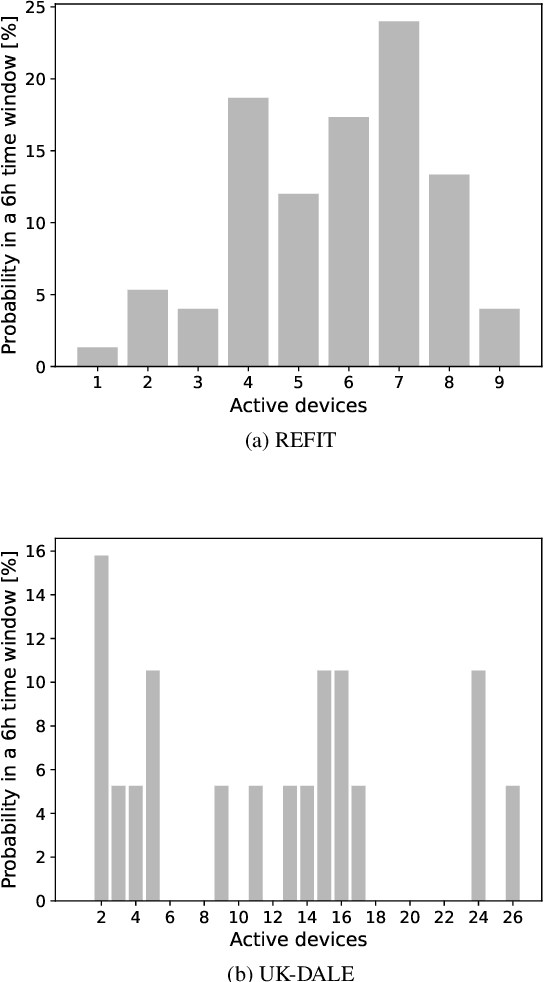

Abstract:Non-intrusive load monitoring (NILM) is the process of obtaining appliance-level data from a single metering point, measuring total electricity consumption of a household or a business. Appliance-level data can be directly used for demand response applications and energy management systems as well as for awareness raising and motivation for improvements in energy efficiency and reduction in the carbon footprint. Recently, classical machine learning and deep learning (DL) techniques became very popular and proved as highly effective for NILM classification, but with the growing complexity these methods are faced with significant computational and energy demands during both their training and operation. In this paper, we introduce a novel DL model aimed at enhanced multi-label classification of NILM with improved computation and energy efficiency. We also propose a testing methodology for comparison of different models using data synthesized from the measurement datasets so as to better represent real-world scenarios. Compared to the state-of-the-art, the proposed model has its carbon footprint reduced by more than 23% while providing on average approximately 8 percentage points in performance improvement when testing on data derived from REFIT and UK-DALE datasets.
XAI for Self-supervised Clustering of Wireless Spectrum Activity
May 17, 2023Abstract:The so-called black-box deep learning (DL) models are increasingly used in classification tasks across many scientific disciplines, including wireless communications domain. In this trend, supervised DL models appear as most commonly proposed solutions to domain-related classification problems. Although they are proven to have unmatched performance, the necessity for large labeled training data and their intractable reasoning, as two major drawbacks, are constraining their usage. The self-supervised architectures emerged as a promising solution that reduces the size of the needed labeled data, but the explainability problem remains. In this paper, we propose a methodology for explaining deep clustering, self-supervised learning architectures comprised of a representation learning part based on a Convolutional Neural Network (CNN) and a clustering part. For the state of the art representation learning part, our methodology employs Guided Backpropagation to interpret the regions of interest of the input data. For the clustering part, the methodology relies on Shallow Trees to explain the clustering result using optimized depth decision tree. Finally, a data-specific visualizations part enables connection for each of the clusters to the input data trough the relevant features. We explain on a use case of wireless spectrum activity clustering how the CNN-based, deep clustering architecture reasons.
On-Premise Artificial Intelligence as a Service for Small and Medium Size Setups
Oct 12, 2022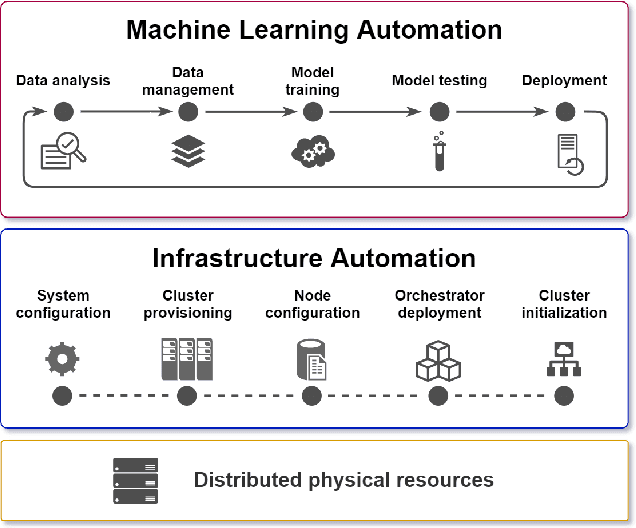
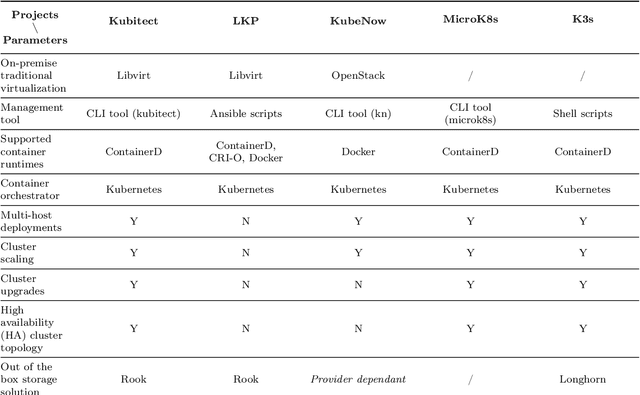
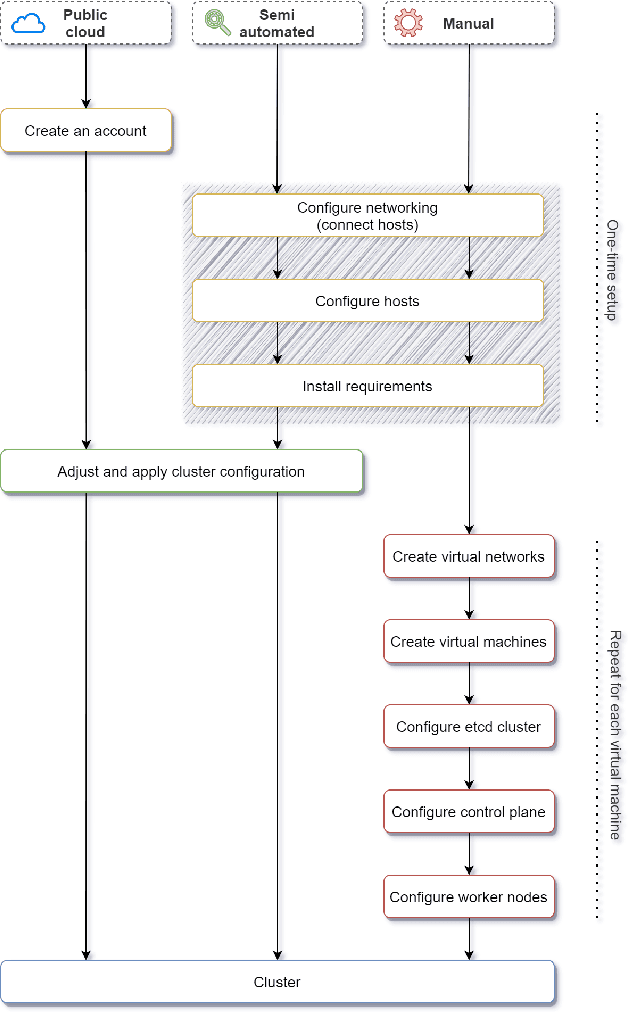

Abstract:Artificial Intelligence (AI) technologies are moving from customized deployments in specific domains towards generic solutions horizontally permeating vertical domains and industries. For instance, decisions on when to perform maintenance of roads or bridges or how to optimize public lighting in view of costs and safety in smart cities are increasingly informed by AI models. While various commercial solutions offer user friendly and easy to use AI as a Service (AIaaS), functionality-wise enabling the democratization of such ecosystems, open-source equivalent ecosystems are lagging behind. In this chapter, we discuss AIaaS functionality and corresponding technology stack and analyze possible realizations using open source user friendly technologies that are suitable for on-premise set-ups of small and medium sized users allowing full control over the data and technological platform without any third-party dependence or vendor lock-in.
Self-supervised Learning for Clustering of Wireless Spectrum Activity
Sep 22, 2022

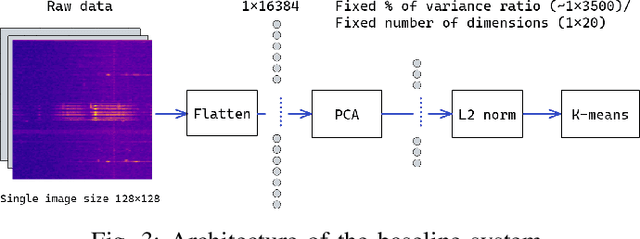
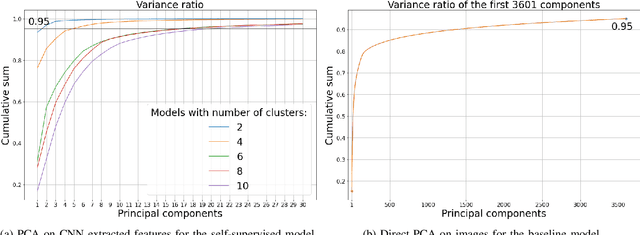
Abstract:In recent years, much work has been done on processing of wireless spectral data involving machine learning techniques in domain-related problems for cognitive radio networks, such as anomaly detection, modulation classification, technology classification and device fingerprinting. Most of the solutions are based on labeled data, created in a controlled manner and processed with supervised learning approaches. Labeling spectral data is a laborious and expensive process, being one of the main drawbacks of using supervised approaches. In this paper, we introduce self-supervised learning for exploring spectral activities using real-world, unlabeled data. We show that the proposed model achieves superior performance regarding the quality of extracted features and clustering performance. We achieve reduction of the feature vectors size by 2 orders of magnitude (from 3601 to 20), while improving performance by 2 to 2.5 times across the evaluation metrics, supported by visual assessment. Using 15 days of continuous narrowband spectrum sensing data, we found that 17% of the spectrogram slices contain no or very weak transmissions, 36% contain mostly IEEE 802.15.4, 26% contain coexisting IEEE 802.15.4 with LoRA and proprietary activity, 12% contain LoRA with variable background noise and 9% contain only dotted activity, representing LoRA and proprietary transmissions.
Towards Sustainable Deep Learning for Wireless Fingerprinting Localization
Jan 22, 2022
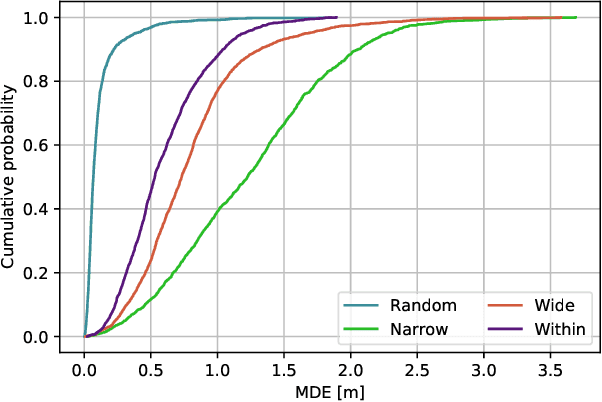


Abstract:Location based services, already popular with end users, are now inevitably becoming part of new wireless infrastructures and emerging business processes. The increasingly popular Deep Learning (DL) artificial intelligence methods perform very well in wireless fingerprinting localization based on extensive indoor radio measurement data. However, with the increasing complexity these methods become computationally very intensive and energy hungry, both for their training and subsequent operation. Considering only mobile users, estimated to exceed 7.4billion by the end of 2025, and assuming that the networks serving these users will need to perform only one localization per user per hour on average, the machine learning models used for the calculation would need to perform 65*10^12 predictions per year. Add to this equation tens of billions of other connected devices and applications that rely heavily on more frequent location updates, and it becomes apparent that localization will contribute significantly to carbon emissions unless more energy-efficient models are developed and used. This motivated our work on a new DL-based architecture for indoor localization that is more energy efficient compared to related state-of-the-art approaches while showing only marginal performance degradation. A detailed performance evaluation shows that the proposed model producesonly 58 % of the carbon footprint while maintaining 98.7 % of the overall performance compared to state of the art model external to our group. Additionally, we elaborate on a methodology to calculate the complexity of the DL model and thus the CO2 footprint during its training and operation.
Learning to Fairly Classify the Quality of Wireless Links
Feb 24, 2021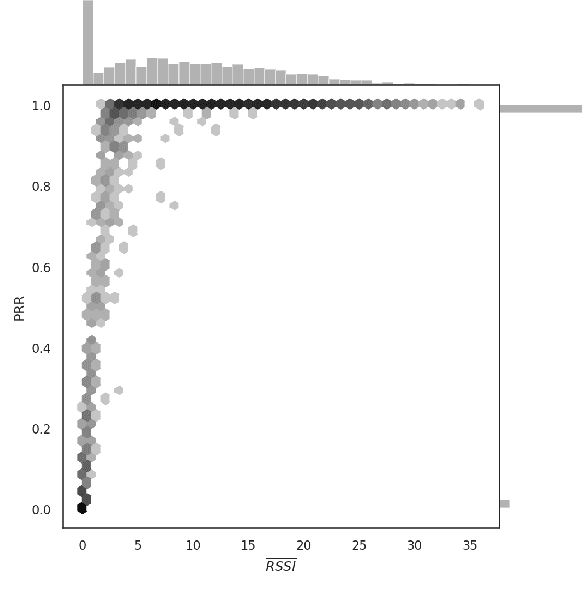
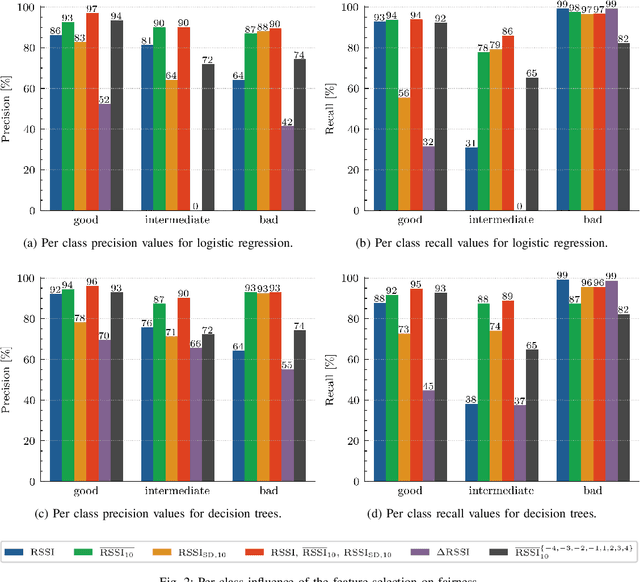
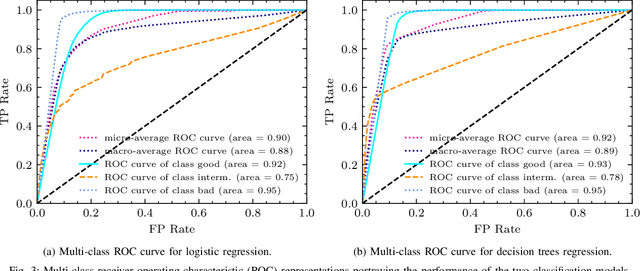
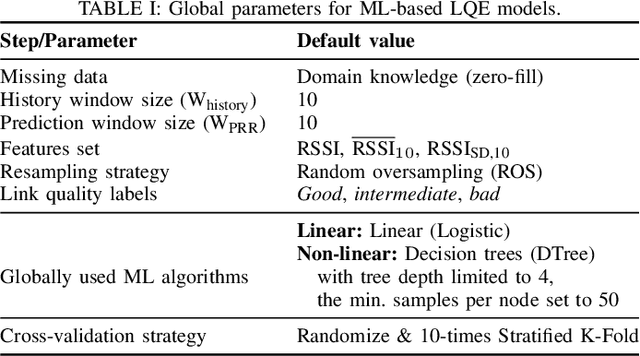
Abstract:Machine learning (ML) has been used to develop increasingly accurate link quality estimators for wireless networks. However, more in-depth questions regarding the most suitable class of models, most suitable metrics and model performance on imbalanced datasets remain open. In this paper, we propose a new tree-based link quality classifier that meets high performance and fairly classifies the minority class and, at the same time, incurs low training cost. We compare the tree-based model, to a multilayer perceptron (MLP) non-linear model and two linear models, namely logistic regression (LR) and SVM, on a selected imbalanced dataset and evaluate their results using five different performance metrics. Our study shows that 1) non-linear models perform slightly better than linear models in general, 2) the proposed non-linear tree-based model yields the best performance trade-off considering F1, training time and fairness, 3) single metric aggregated evaluations based only on accuracy can hide poor, unfair performance especially on minority classes, and 4) it is possible to improve the performance on minority classes, by over 40% through feature selection and by over 20% through resampling, therefore leading to fairer classification results.
Improving CSI-based Massive MIMO Indoor Positioning using Convolutional Neural Network
Feb 05, 2021



Abstract:Multiple-input multiple-output (MIMO) is an enabling technology to meet the growing demand for faster and more reliable communications in wireless networks with a large number of terminals, but it can also be applied for position estimation of a terminal exploiting multipath propagation from multiple antennas. In this paper, we investigate new convolutional neural network (CNN) structures for exploiting MIMO-based channel state information (CSI) to improve indoor positioning. We evaluate and compare the performance of three variants of the proposed CNN structure to five NN structures proposed in the scientific literature using the same sets of training-evaluation data. The results demonstrate that the proposed residual convolutional NN structure improves the accuracy of position estimation and keeps the total number of weights lower than the published NN structures. The proposed CNN structure yields from 2cm to 10cm better position accuracy than known NN structures used as a reference.
Link Quality Estimation using Machine Learning
Dec 07, 2018



Abstract:Since the emergence of wireless communication networks, quality aspects of wireless links have been studied for several technologies. By analyzing the rich body of existing literature on link quality estimation that uses models built from data traces, we have noticed that the techniques used for modelling are becoming increasingly complex. Several recent estimators use machine learning techniques, however it is sometimes difficult to understand the reported results as each model that relies on machine learning requires a complex design and development process. Each step of this process has the potential to significantly impact the final performance. The aim of this paper is to provide an in depth study of how each step in the process of designing and developing a link quality estimator using machine learning affects its performance. Based on the analysis of the state of the art, we selected a representative subset of machine learning models used in the literature and a representative publicly available dataset and performed a systematic study on the influence of the design decisions taken in each step of the machine learning process on the performance of machine learning based link quality estimators. Our results show that measurement data pre-processing and feature engineering have a higher influence on the performance of the model than the choice of the algorithm.
 Add to Chrome
Add to Chrome Add to Firefox
Add to Firefox Add to Edge
Add to Edge